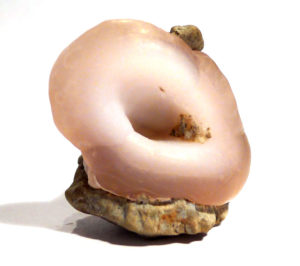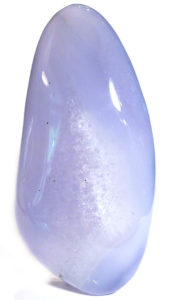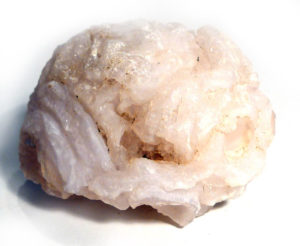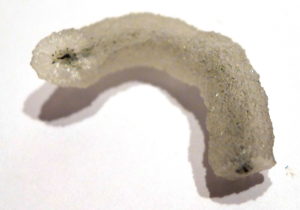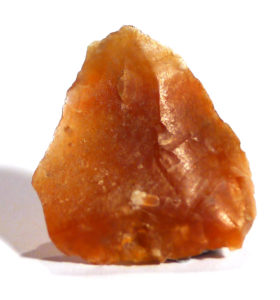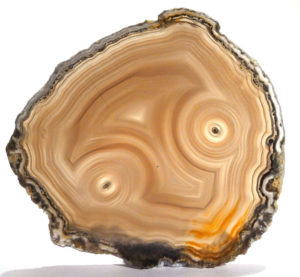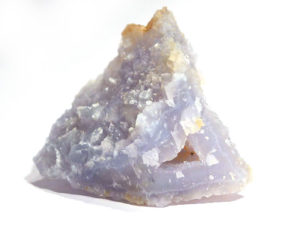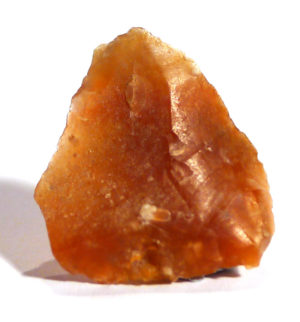Properties:
Chalcedony is found in a wide range of colours, due to trace elements and included microscopic minerals. Most coloured chalcedonies have individual variety names – please see entries for agate, blue lace agate/blue chalcedony, carnelian, chrysoprase, and flint. As you can imagine, the healing properties can vary considerably. However, the shell-like translucence of fibrous chalcedonies gives an indication of the qualities they have in common. Chalcedony has a soft, sweet energy that smooths ruffled feathers, and nurtures and supports the user. Most have an “otherness” – a sense of existing in several dimensions at once, or straddling this world and the “Other World”, so most are excellent for working interdimensionally, and with angelic and nature energy. A possible exception is carnelian – understandable with its inclusion of iron oxide, but even in this case it has a dual nature. It is well known for its fiery energy, which instils courage, motivation, energy and happiness, but it also brings attention to the Tan T’ien, and so doing helps to ground spiritual energy, calm busy mind and aid inner stillness.
Attributes:
- Chemical Formula: SiO2 – quartz
- Group: Silicates – tectosilicates
- Crystal System: Trigonal/Hexagonal
- Hardness: 7
- Birthstone: Depends on colour
- Chakra: Depends on colour
- Element: Depends on colour
Mineralogy:
Chalcedony is a microcrystalline variety of quartz. Quartz is subdivided into groups: macrocrystalline (such as quartz, amethyst, citrine, and smoky quartz), massive (rose quartz, aventurine and tiger’s eye), and microcrystalline. Microcrystalline quartz is further subdivided into the fibrous chalcedonies such as agate (when it displays banding), blue chalcedony, carnelian, chrysoprase, pink chalcedony and flint; and granular chalcedonies such as bloodstone and jasper. ‘Fibrous’ in this context simply means that the quartz crystals form as parallel microscopic fibres. Fibrous chalcedonies are translucent, and white in their purest form, but trace elements and microscopic inclusions give them a wide range of colours. Habit may be maxillary (breast-like), botryoidal (resembling a bunch of grapes), or stalactitic (forming as stalactites and stalagmites). They form in geodes, veins and concretions when low-temperature, silica-rich waters percolate through existing rocks, particularly volcanic rocks (bear in mind, low temperature in this instance is still extremely hot!). Chalcedony can be any colour due to embedded minerals, and multi-coloured specimen are not uncommon. Being relatively porous, it is frequently dyed to improve its marketability.
History and Tradition:
The name ‘chalcedony’ was first mentioned by Agricola in 1546, regarding a stone named after the town of Chalcedon, now modern-day Kadıköy, a district within the city of Istanbul, Turkey. Some individual varieties are associated with specific history and tradition.
